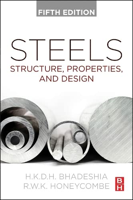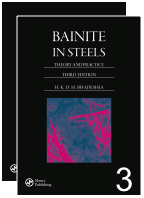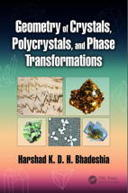
![[Queen Mary University of London]](https://www.phase-trans.msm.cam.ac.uk/QMUL.png)

Transport by rail is an efficient way of moving goods and people while managing problems such as congestion and the consequences on the environment. The relatively low energy consumption and CO2 emissions are attributed to the low rolling-resistance due to the stiffness of the wheel and rail, leading to small contact area. Investments in rail transportation has boomed in recent years. London, with the oldest underground rail system in the world, has added the Elisabeth Line at a cost of some 14 billion GBP; China now has the largest high-speed rail system in the world. All these developments rely on the safe performance of steel rails, which suffer from two primary damage mechanisms, rolling-contact fatigue caused essentially by repeated contact stresses with the wheel, and a variety of wear mechanisms. Factors such as weldability are important, given that all modern rails are continuous. This review deals with the detailed physical-metallurgy of rail steels, including alloy design, microstructure, variety and choice, and damage mechanisms.
Progress in Materials Science 146 (2024) 101313
 |
Here is a quote from Darwin's autobiography:
“If I had my life to live over again, I would have made a rule to read some poetry...."
When the train left the station,
the track fell still
No touch, no groan, no screeeeech
Unhitched from the world.
But wait,
What be this
which has only just appeared?
 5th edition published 2024 |
 Free download |
 Free download |
 Available |
 Free download Published 2021 |
 Published, 2023 |
 Published 2022 |
 October 8th, 2024 |
| PT Group Home | Materials Algorithms |